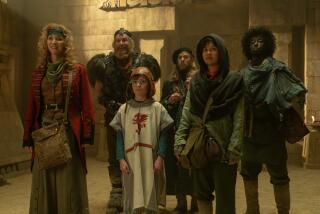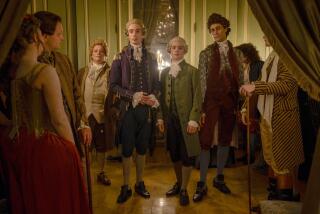A Second Look: ‘Tinker, Tailor, Soldier, Spy’ miniseries
The early, largely positive reviews for “Tinker Tailor Soldier Spy,” Tomas Alfredson’s new big-screen version of the classic John le Carré novel, have come with an undercurrent of surprise. Le Carré’s murky, tricky stories present obvious challenges to filmmakers, and “Tinker” — published in 1974 and considered one of his murkiest, trickiest books — was turned into a lauded 1979 BBC miniseries that the author himself once termed the most successful adaptation of his work.
With a leisurely running time of nearly 51/2 hours over six episodes (Acorn Media has just reissued a three-disc DVD edition), it’s certainly the most faithful.
Le Carré, as it happens, also approves of Alfredson’s film, set to open Dec. 9 (the author has a cameo in it). The new movie is rich in incident and atmosphere; Alfredson, a Swedish director with a gift for mood-making (his previous film was the coming-of-age vampire tale “Let the Right One In”), has ratcheted up the ambient dread and gloom that distinguishes much of Le Carré’s Cold War fiction.
But for a purer essence of Le Carré and the dizzying pleasures of his narrative style — the stories within stories, the ebb and flow between bewilderment and clarity, the sense of the world being reframed through sudden shifts in perspective — the format of choice remains long-form television.
Directed by John Irvin and anchored by a tremendous Alec Guinness performance as the superspy George Smiley, the “Tinker” series looms over Alfredson’s movie no less than the book. Smiley is Le Carré’s signature creation, a guarded, bespectacled anti-James Bond, and Guinness’ incarnation is iconic (he reprised the role for the 1982 series “Smiley’s People”).
In “Tinker,” Smiley, newly ousted from the service, is rehired to ferret out a mole at the highest levels of British intelligence. Five suspects have been identified (he’s one of them), and much of the action consists of Smiley methodically slicing his way through the fog of lies and bureaucracy.
This was an ideal role for Guinness, who in a long career of perpetual reinvention proved himself a master of understatement and ambiguity. Smiley’s job for much of the running time is simply to ask questions and, more so, to listen, and even in a shadowy world of professional bluffers, his poker face is unbeatable. This melancholic spy is perhaps the ultimate example of what the critic Kenneth Tynan called Guinness’ “iceberg characters, nine-tenths concealed.”
Le Carré was once an employee of British intelligence, and his espionage fiction is less a vehicle for jet-set thrills than a metaphor writ large for the everyday subject of duplicity. (Someone in “Tinker” calls the secret service “the only real expression of a nation’s character.”) Instead of Ian Fleming-style bravado, he tends to opt for a tart wistfulness: Describing the experience of succumbing to interrogation, one spy says with a sigh, “You just run out of stories to tell.”
But while the escapades in “Tinker” might not be exactly glamorous — they are even less so in the series, which maintains a relatively glacial pace and allows for more digressions — there is something captivating about this fully imagined and inhabited world, where code names abound, functionaries are termed “lamplighters” and “scalp hunters,” and secret service headquarters is dubbed “the Circus” (the DVD comes with a helpful glossary).
Le Carré lavished plenty of attention on his secondary characters, down to their memorable names (Peter Guillam, Jim Prideaux, Toby Esterhase), and one thing that hasn’t changed since 1979 is the wealth of great British character actors capable of suggesting entire lives and histories in a mere handful of scenes.
The new “Tinker” features strong supporting work from the likes of Benedict Cumberbatch, Mark Strong and Kathy Burke, among many others, and the cast of the miniseries is, if anything, even more distinguished — apparently motivated by Guinness’ presence, such stage luminaries as Beryl Reid, Patrick Stewart and Ian Richardson signed on.
In Alfredson’s film one detects both the cool clarity of hindsight and more than a touch of retro luxuriance (all that ‘70s wallpaper, a prominently featured disco cover of “La Mer”). But fodder for today’s nostalgia was, of course, once a stark reality: The wearying chill of the Cold War is authentic in the original series.
Like Le Carré’s novel, it’s the genuine article, an artifact of a vanished era that for all its fetishized intrigue seems a good deal more innocent than ours.
More to Read
The biggest entertainment stories
Get our big stories about Hollywood, film, television, music, arts, culture and more right in your inbox as soon as they publish.
You may occasionally receive promotional content from the Los Angeles Times.










